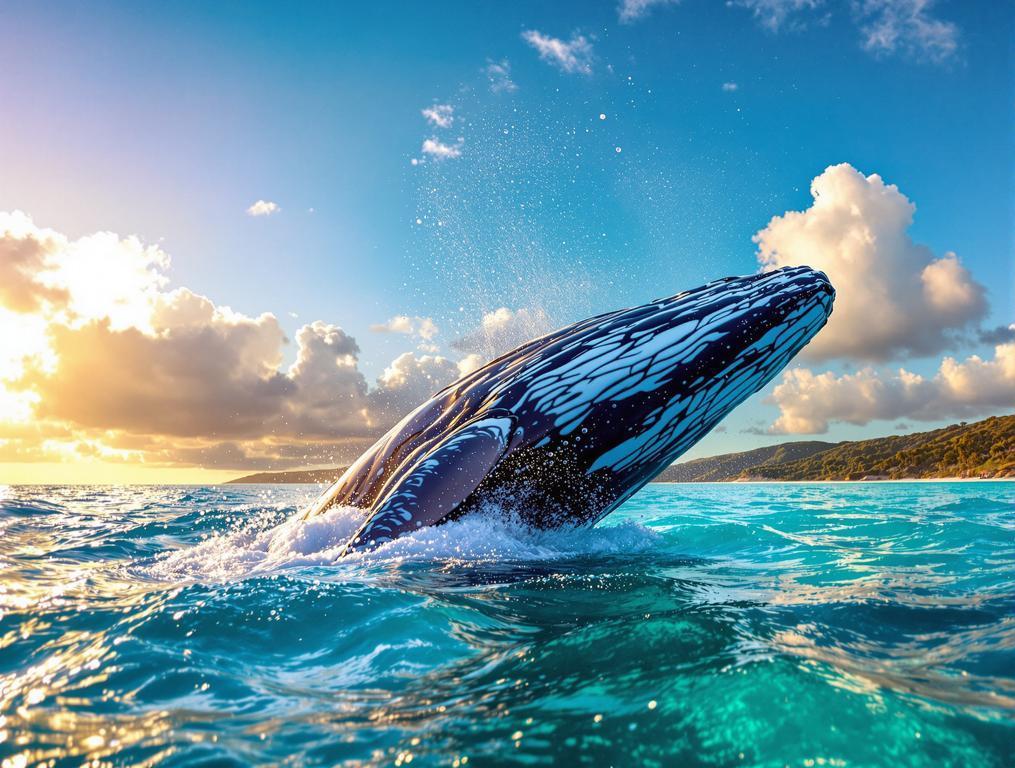The 4WD struggles slightly in the soft sand as I pull into the MV Sarawak camping area. My wheels come to rest behind coastal dunes where the morning light filters through sheoaks. Behind me stretches the Inskip Peninsula; ahead, across the water, the unmistakable silhouette of Fraser Island emerges from the mist. It’s 6:30 AM in late June, winter in Queensland, and I’ve timed my arrival perfectly – over 30,000 humpback whales are currently migrating along this coastline, visible from these shores during a fleeting 6-week window that most Gold Coast tourists never discover.
Queensland’s Hidden Winter Whale Highway
This secluded coastal gem sits quietly at coordinates 25°48’33 S, 153°3’17 E, a world away from the Gold Coast’s glittering high-rises despite being in the same state. The camping area – often mistakenly called “Sarawak Beach” – holds a fascinating history, named after a WWII-era navy minesweeper that once transported sugar between Brisbane and Maryborough from 1949 to 1970.
What makes this spot extraordinary is its strategic position. While thousands flock to expensive whale-watching tours from Hervey Bay, here at Sarawak you can simply walk from your tent to witness the annual migration. The spectacle peaks during June through early August, when mothers and calves travel close to shore, seeking protection in the calm waters between Fraser Island and the mainland.
“You can sit with your morning coffee and watch them breaching not far offshore. Sometimes they’re so close you can hear them exhale. Been coming here for fifteen winters and the crowds still haven’t found it,” a fellow camper tells me as he packs his fishing gear.
Unlike overcrowded whale-watching destinations, Sarawak’s limited access – it’s the fifth camping area from the Inskip Point entrance and requires 4WD vehicles for optimal sites – keeps visitor numbers naturally controlled. While the camping area itself is Queensland’s largest in Inskip, the experience remains refreshingly uncrowded.
The Gold Coast’s Peaceful Antithesis
Just hours from the 600,000+ residents crowding the Gold Coast, Sarawak offers a stark contrast. Here, population statistics don’t exist because there are no permanent residents – just campers seeking tranquility. While Surfers Paradise packs tourists into high-rise hotels, Sarawak spreads visitors across sandy sites shaded by coastal vegetation.
“After twenty years visiting Australia’s coastal destinations, I’ve never found a place that combines accessibility with this level of isolation. It’s like discovering Australia as it was decades ago – no souvenir shops, no tour buses, just nature.”
What truly separates Sarawak from better-known destinations is its dual identity as both a whale-watching base and gateway to Fraser Island. From here, the Mantaray Barge provides vehicle access to the world’s largest sand island, letting visitors skip the more congested departure points farther south.
Sarah captures dawn photos as a pod of dolphins cuts through the water. Unlike Australia’s Falkland Islands beaches where wildlife remains year-round, Sarawak’s cetacean visitors appear only during this brief winter migration – making the timing of our visit particularly special.
What The Guidebooks Won’t Tell You
Access requires planning. The 13km drive from Rainbow Beach follows unsealed roads with sections of deep sand. First-timers should deflate tires to 18-20 PSI and carry recovery gear. While some sites accommodate 2WD vehicles in dry conditions, 4WD is strongly recommended, especially after rain.
Unlike destinations such as Tasmania’s historic Beaconsfield, Sarawak’s appeal lies in what it doesn’t have: no shops, no cafes, just hybrid toilet facilities and basic amenities. Pack everything you need, including drinking water and food for your entire stay.
For optimal whale sightings, bring binoculars and head to the beach between 7-10 AM when morning light illuminates the water and winds remain calm. While Nicaragua’s beaches may expand 300 feet with tides, Sarawak’s shoreline offers consistent viewing platforms regardless of tidal conditions.
As the winter sun sets over Fraser Island, casting golden light across the campground, I understand why this place remains Queensland’s best-kept secret. My daughter Emma collects shells while Sarah photographs a breaching whale in the distance. In the Australian winter quiet, far from the Gold Coast’s perpetual summer party, Sarawak reveals that Queensland’s true magic often lies in places without postcards – where nature’s grandest spectacles perform for the few who venture beyond the obvious.
